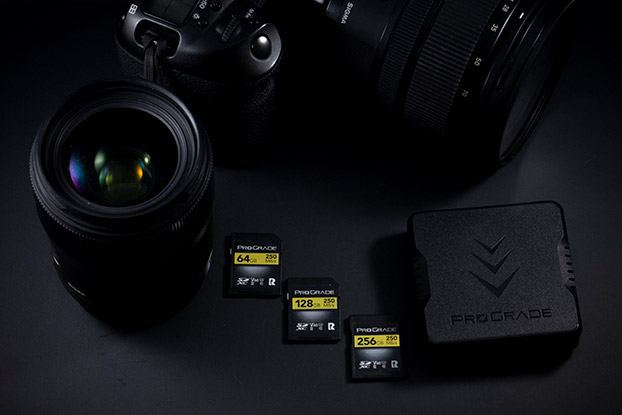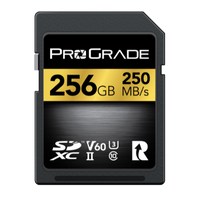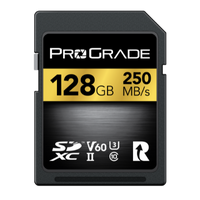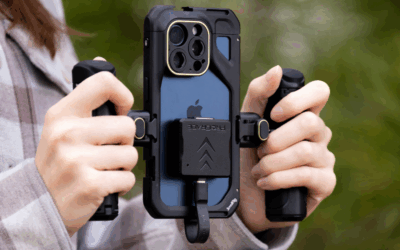Whenever you grab your camera and hit the shutter button, all the whirlpool of emotions, feelings, and sensations around you get turned into ones and zeros in a blink of an eye. No matter what digital camera you use, these ones and zeros will usually be stored on some kind of memory card. Most commonly, SD, microSD, or CFexpress cards.
This article will help you understand different types of memory cards for digital cameras and figure out which one works best for what.
SD (Secure Digital) Memory Cards
SD cards were first introduced in August 1999. These cards quickly became an industry standard. Mainly because of their fits-everywhere size. However, original SD cards had their limitations. They could only hold 2GB of data, and their 12.5MB/s write speed was not enough for faster devices like digital cameras. That led to the creation of SDHC and SDXC cards.
SDHC (Secure Digital High Capacity) Memory Cards
This type of memory card has the same form factor as SD cards, but they can hold up to 32GB of data and are much faster. Regardless, SDHC cards may not be the best choice for serious photographers or videographers, as they still don’t have enough capacity. A 32GB card has significantly more space than a 2GB card, but it can still hold no more than 20 to 45 minutes of 4K video, depending on the codec, framerate, and bitrate.
SDXC (Secure Digital Extended Capacity) Memory Cards
Like SDHC, SDXC cards also share the form factor with the first SD cards but with an added row of contacts that enable them to record at higher speeds The newest standard is both high-speed and high-capacity, crucial for shooting high-bitrate and high-framerate 4K videos as well as bursting RAW photos. When SDHC cards max out at 32GB, the SDXC cards are only getting started at 64GB.
SDXC V60 and SDXC V90 Memory Cards
Not all SDXC cards are created equal. They differ greatly in both the read and write speeds. Latter is especially important when shooting video, as that requires a stable minimum write speed to avoid frame drops and errors during recording.
SDXC cards that can handle large amounts of streaming data carry a Video Speed Class rating. This is marked on the card with the letter “V” followed by a number. The “V” stands for video, and the number displays the minimum sequential write speed in MB/s. For example, the write speed of the V90 card is guaranteed not to drop below 90MB/s.
Since higher-speed cards can handle more data in the same amount of time, they allow digital cameras to do more. Just put an SDXC V60 or V90 card in your camera (instead of a slower V30), and a whole new world of possibilities opens up for you. Memory cards for digital cameras have come a long way!
For instance, the V30 card limits the Sony a7s III camera to a mere 1080p video at 120fps. Plus, you can’t go above 4:2:0 8 bit colors or exceed 100mbps data rate. SDXC V60 cards, at the same time, can easily handle 280mbps and allow you to shoot 4K video at 120fps with 4:2:2 10 bit colors. SDXC V90 cards push this even further and let you shoot 4K at 600mbps.
Similar opportunities arise with Nikon, Panasonic, Canon, and other digital cameras when faster cards are used. For that reason, dedicated photographers and cinematographers should always stick to either SDXC V60 or SDXC V90 memory cards whenever using an SD-card-compatible camera.
MicroSD, MicroSDHC, and MicroSDXC Memory Cards
Compared to standard SD, SDHC, and SDXC cards, microSD, microSDHC, and microSDXC cards are smaller in size, miss the data protection switch, and can reach 1TB capacity due to their nearly non-existent size. Other than that, these types of memory cards for digital cameras are pretty much like their bigger counterparts. They even share the same bus interfaces and speed classifications.
However, since micro cards are used mainly in action cameras and drones, you don’t need a V90 card. A microSDXC V60 is more than enough and gives you sufficient headroom. Currently, there’s not even a single action camera or drone that requires a V90 card. In fact, most of them, including the latest GoPro models, ask only for a microSDXC V30 card.
That said, we at ProGrade Digital don’t recommend V30 cards for photographers and videographers. First, technology keeps improving, and, rather sooner than later, action cams will also start requiring faster cards. So, microSDXC V60 cards are more future-proof. Second, ProGrade Digital microSDXC V60 cards are tested to the requirements of mirrorless and DSLR cameras, like our full-size SDXC cards. So, they are much more versatile, and besides drones and action cams, you can also use them in standard SD-card-compatible digital cameras. They even come with a special adapter for that.]
CFexpress Type A and Type B Memory Cards
CFexpress is currently the most capable memory card on the market. It’s the reason why XQD and CFast cards are slowly fading off. The same goes for CompactFlash cards. Unless you have a camera that still uses one of these cards, you really have no reason to look into them.
CFexpress, meanwhile, is worthy of your attention. These cards are quickly becoming a new standard in DSLR, mirrorless, and cinema-class video cameras.
By utilizing the PCIe interface and NVMe protocol, Cfexpress cards can achieve astronomical read and write speeds compared to SD cards. For example, our CFexpress Type A cards can sustain a write speed of 700MB/s and CFexpress Type B cards 1.5GB/s.
Unlike SD cards, CFexpress cards do not have the same form factor. So a camera using CFexpress Type A cards is not compatible with CFexpress Type B cards and vice versa. Type A cards are smaller and closer in size to SD cards, while Type B cards have the same size as XQD cards. In fact, any camera that uses XQD cards should theoretically be able to use CFexpress Type B cards as well. Several camera manufacturers, including Nikon, have issued firmware updates to their XQD compatible cameras to allow faster CFexpress cards.
Hopefully, you now have a better understanding of different types of memory cards for digital cameras. Now that you know the basics, it’s a good idea to check our free compatibility charts for even more information and to see what cards and cameras match the best.





